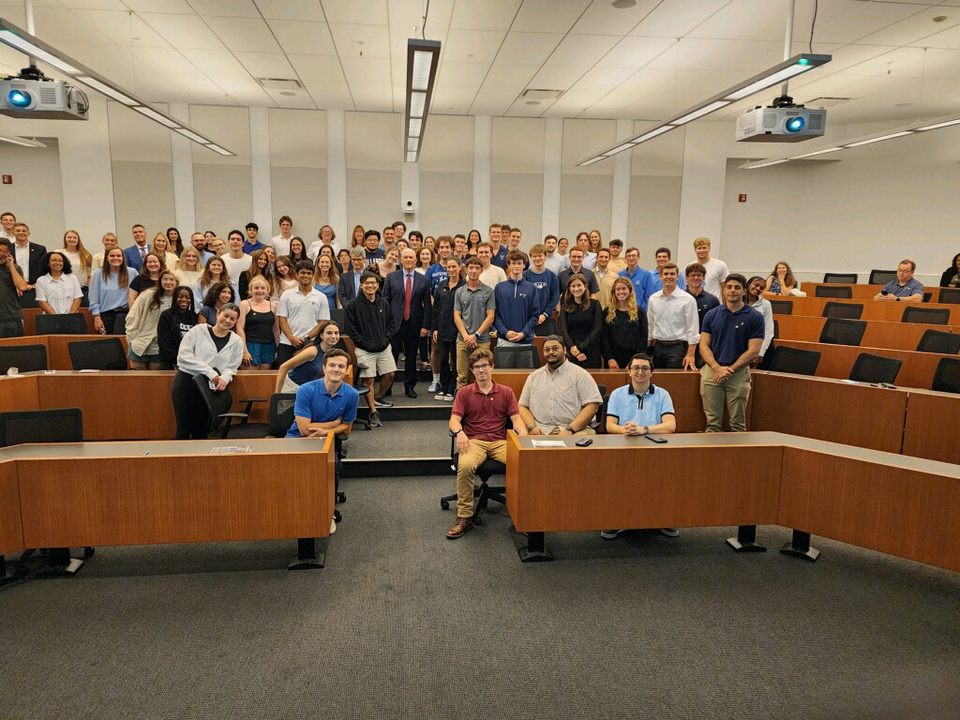Unlike me, you might not worship at the feet of grammatical divinity. Maybe you’ve never even heard of the Oxford comma. But I have. And I relish it.
For context, let’s define the Oxford comma. In the words of Mr. Merriam-Webster himself, it is “a comma used after the penultimate item in a list of three or more items, before ‘and’ or ‘or.’”
In simple terms, the comma adds a layer of separation between the last item of a list and the rest of the sentence. For example, writing “Villanova is beautiful, academically rigorous, and has a good basketball team,” utilizes the Oxford comma.
The Oxford comma became increasingly popular after the 20th century, when the Oxford University Press updated its style guidelines, giving it its name. Since then, it has garnered the support of the masses. Particularly, the Oxford comma presents itself in everyday, non-academic use.
Technically speaking, the Oxford comma isn’t grammatically correct. Yet, it’s not grammatically incorrect, either. It exists in a strange, metaphysical, universe known as “grammatically optional.”
In other words, the comma won’t fly in most journalistic publications and formal documents. Still, you won’t be arrested if you choose to add it to a personal piece of writing.
Many news outlets refrain from using the Oxford comma for continuity’s sake. In a mosaic of news articles with multiple contributing authors, overarching grammatical rules bring a sense of connection to the publication.
A common set of guidelines is not uncommon within the field of journalism, even The Villanovan has sets of rules for its writers to follow. For example, Copy Desk prohibits exclamation marks and the use of italics, among other dos and don’ts.
So then, why not have everyone use the Oxford comma? It would still be consistent across the board, and arguably more fluid to read. One theory is that it might bring a level of informality. Because it is not “grammatically-correct,” the Oxford comma doesn’t possess the high level of sophistication that publications typically strive for.
Society tends to adhere to tradition and accepted norms, and it’s easier to resist change than to embrace it. While the Oxford comma might become more universally accepted in the future, only time will truly tell. Another theory exists strictly through a historical lens, specifically, the former financial burden of unnecessary punctuation.
While printing fees have drastically reduced with the influx of digital media, original revolutionary era newspapers paid per character. If pieces of punctuation weren’t necessary to being grammatically correct, printing companies would simply omit them from ink.
This same reasoning applies to spelling inconsistencies between British, Canadian and American English. The spelling of words such as “colour” and “travelling” vary intercontinentally because expendable letters were dropped in America’s infancy. Maybe the Oxford comma met the same fate.
Whatever the reason for the Oxford comma’s lack of universal acceptance, I implore Villanova students to continue using it as they see fit. Through essays, emails and even newspaper articles, Villanova should remain Oxford-comma sympathizers.
And with that, I leave this note to the wonderful staff members of Copy Desk: I will fully continue to lead the Oxford comma charge, no matter how often you edit them out of my articles.
While my beloved comma might never see the light of day in The Villanovan (including this very article), it will forever remain important to me. One day, I hope to change the social stigma surrounding my favorite piece of punctuation, and you’ll be the first to know.







